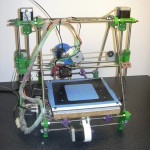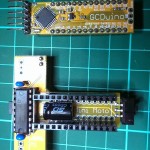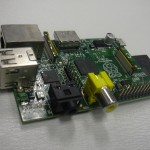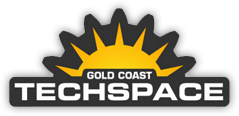- While people can come to the TechSpace and work on their own projects, we tend to focus as a group on the following SIGs and group projects. They are a very good way to engage people in the space.
- Special Interest Groups (SIGS): SIGS generally begin life as projects and morph into SIGs when they are recognised as ongoing interest groups focussed on a particular topic or technology, with typically no single specific outcome, but rather multiple outcomes/creations/artifacts likely to be created over time.
RepRap (3D Printer) SIG
RepRap is a 3D printer that is:
- Open Source (design is free to use, and contribute back to),
- self replicating (yes – it can print a copy of itself – or at least the non-commodity parts) and
- a massive technology disrupter.

3D printing is tipped to be a key technology of this decade and Reprap is right at the forefront of it. See the RepRap website for more.
Most hackerspaces choose RepRap as their first group project and it’s easy to see why. It is low cost ($600-$1000 to build) and includes elements of software, hardware, and electronic, mechanical, robotic and even chemical engineering. It is also a lot of fun to build and play with and seems to really capture peoples imagination and get people talking. The thingiverse website gives an idea of the kind of things you can print on it and a segment on the ABC Catalyst TV program in 2012 gave a good simple introduction to 3D printing.
Gold Coast TechSpace have built two RepRaps, and the third is under construction. They are used at the Space, and are also taken out on the road to schools, libraries and to other groups, to demonstrate what the technology can do and hopefully inspire people to build their own. Several of our members have now built their own RepRaps and other types of 3D printers as well.
More: Our outdated RepRap wiki page has some historic info.
Arduino SIG

Arduino is officially described as “an open-source electronics prototyping platform based on flexible, easy-to-use hardware and software”. They are relatively inexpensive, so we are using them for more than just prototyping. So far, apart from learning on them, we tend to create specialised one-off or low volume products with them and leave embedded in the finished product.
Many of us now have one or more Arduinos. We are using them to create a large number of electronics hardware pieces of technology, controlled by the Arduino which we program using its own software IDE.
There are many variants of Arduino. We have created our own small form-factor Arduino boards called GCDuino. The GCDuino fits nicely on a breadboard and can be combined with our MiniMoto shield to create cool robotics projects. We also have a 3.3volt variant called GCDuiNode, which has a variety of network headers, making it great for M2M (machine to machine, ie the “Internet of Things”) projects. See the GCDuino wiki page at GCTechShop for more.
More: our outdated Arduino wiki page …
The Arduino SIG also includes other microsystems, eg currently the Raspberry Pi and the ODroid.
Raspberry Pi
 The UK was once number 1 in the world for games, it’s now around number 6. However, there is a massive skills shortage on the horizon and unless kids at schools start learning programming again (it’s only an option in the upper years and rarely chosen) then their software development industry will disappear. To address this, Raspberry PI is an interesting technology that has come out of the UK Games Industry. The creator, David Braben, wrote the massively successful game “Elite” in the 1980s.
The UK was once number 1 in the world for games, it’s now around number 6. However, there is a massive skills shortage on the horizon and unless kids at schools start learning programming again (it’s only an option in the upper years and rarely chosen) then their software development industry will disappear. To address this, Raspberry PI is an interesting technology that has come out of the UK Games Industry. The creator, David Braben, wrote the massively successful game “Elite” in the 1980s.
The Raspberry PI is a very inexpensive computer (around $50), the size of a credit card. The intention of the project in the UK is to potentially give one to every child in every school that wants one. All you need to use it is a keyboard, mouse and monitor. Power consumption is very low and kids can use it to program using languages such as Python (and PyGame for games) and Scratch (for younger kids). See this video for more details – http://www.bbc.co.uk/news/technology-13292450
The technology is also very useful for a whole lot of other purposes. It was released mid 2012. Several of us have them now, and we are beginning to incorporate them into several individual and group projects.
Starting a Project
New ideas for projects are welcome!
- Please present any idea for a project by email to [email protected], ie our mailing list on our site at Meetup.com. This will allow other members to indicate their interest in it and discuss it. A meeting will be scheduled to discuss it face to face, if and when there is sufficient interest. After that, if their is sufficient interest at this meeting, it is up to you and those interested to take the project forward. Some projects start with just two people, but still move ahead from there and attract others as they progress.
- If a project is started –
- Project members are encouraged to communicate via the Gold Coast TechSpace Discussion Group on Google. Its objective is to provide a simple communication mechanism for detailed discussion and to co-ordinate activity within all projects. Anyone can apply to join it. This helps to keep detailed project issues and project-related chatter off the main mailing list. Membership of this Google Group is open to GCTechSpace members as well as other interested parties (non-GCTechSpace members).
- A wiki page will be created in which project members can keep a summary of the status of the project, miscellaneous notes etc.
- Full members will be able to work on their projects at the TechSpace at any time of the day or night.
